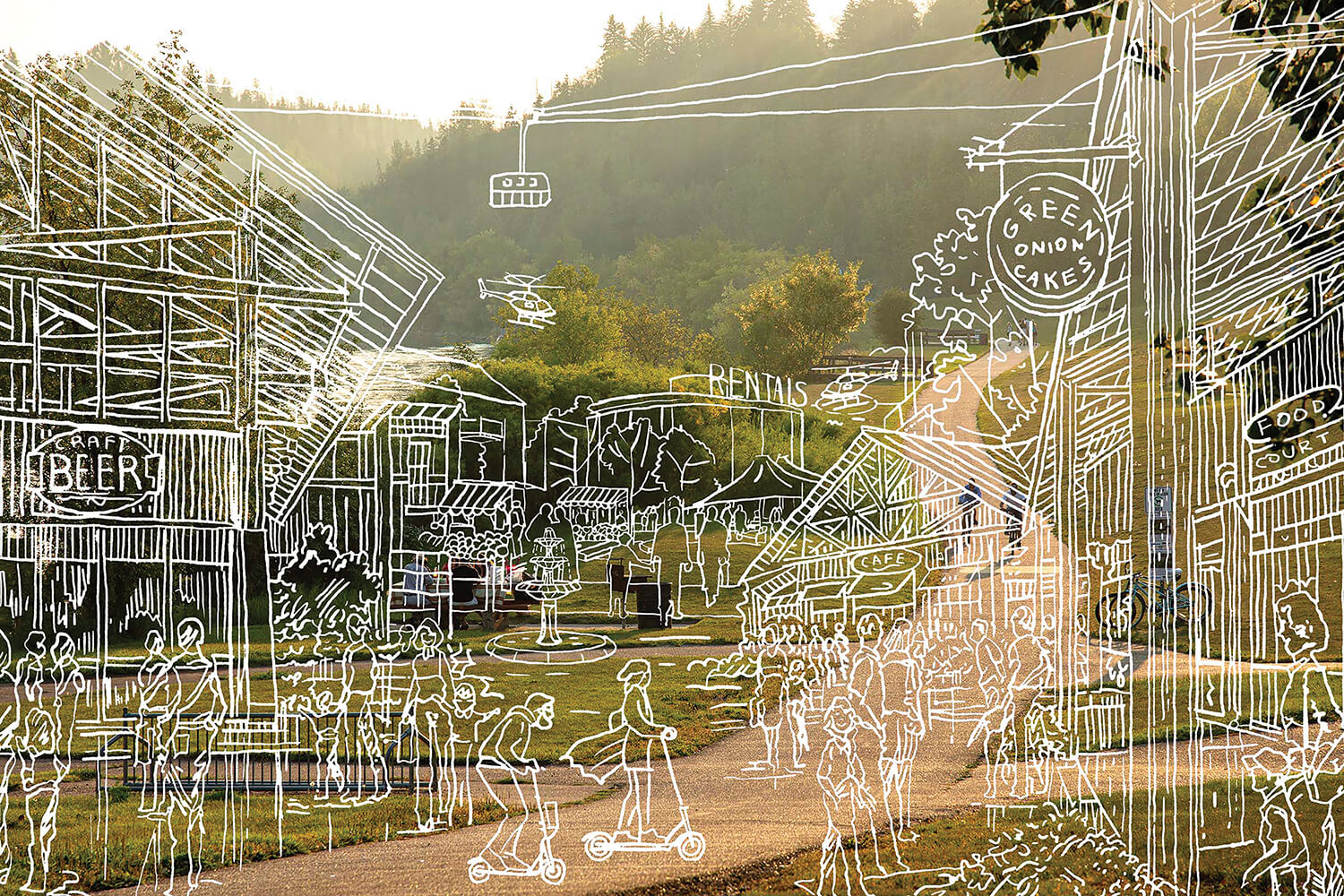“It’s our greatest amenity, and it’s relatively untouchable,” he says. “There aren’t many areas of the river valley where development is even possible. There’s so much opportunity outside of the river valley for densification and responsible development within the confines of our city limits, that I don’t even think it should ever really be a discussion.”
But he distinguishes between traditional, large-scale mixed-use development and projects like the gondola — which he supports — to improve access to the valley. He uses the trails as a cyclist. “It would be great to go buy a water or a sandwich or something, so having little retail nodes within that would be responsible development,” he says.
Hansen-Carlson says Prairie Sky goes into the planning process “eyes wide open,” aware of the potential roadblocks that lie ahead, including respecting the sacred status of the Rossdale lands to Indigenous groups.
He casts that challenge as an opportunity.
“You go to any great city all around the world and regardless of their story, if there’s an honesty about telling that story, it really contributes to the culture and the fabric and the reason people go to places and do things,” he says.
“The heart and soul of Edmonton’s story, not just Edmonton, but the historic story — the Indigenous communities and the sacred land — those two stories collide, quite literally, in West Rossdale. And so we’ve made very light attempts at taking those two stories and creating something special with it.
“We all need to demonstrate a little bit of courage to crack this conversation open in a way where, if you’re not a runner, you’re not a rollerblader or a cyclist, you can go have a respectful commercial experience in the river valley — say, go have a glass of wine by the river — in a venue that tells a story.
“There’s a way to do it gracefully and respectfully.”
This article appears in the June 2021 issue of Edify
